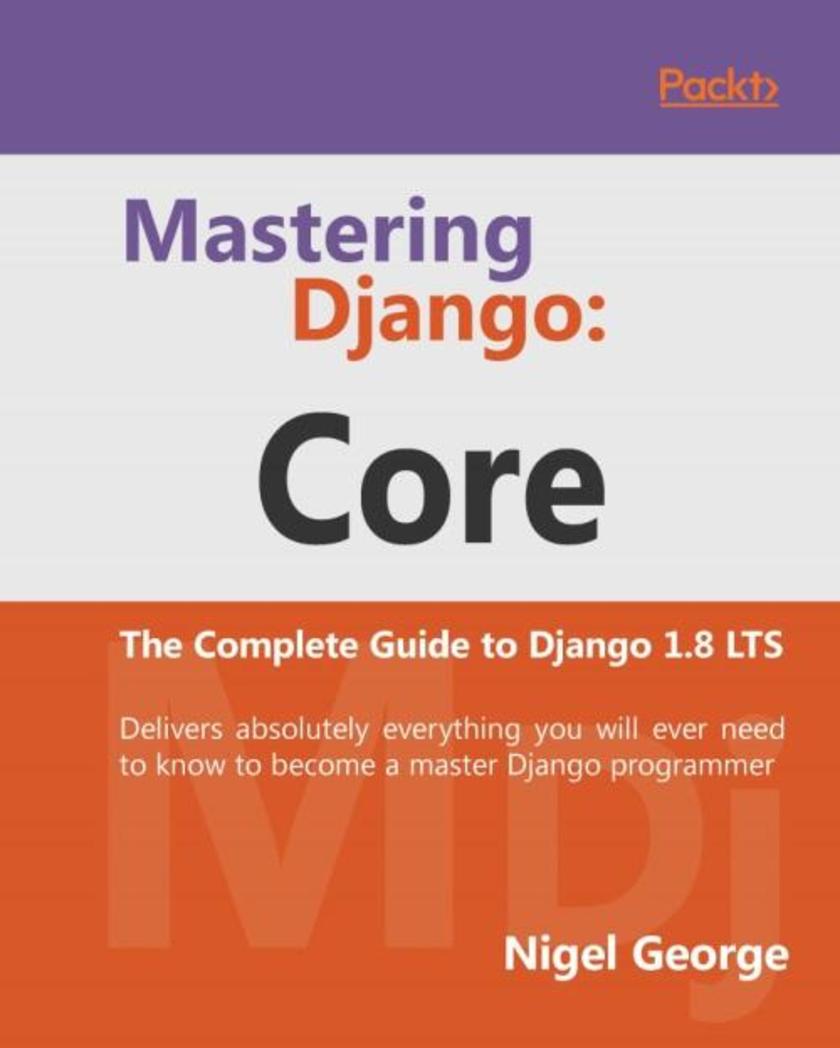
Mastering Django: Core
¥90.46
Delivers absolutely everything you will ever need to know to become a master Django programmer About This Book Gain a complete understanding of Django—the most popular, Python-based web framework in the world Gain the skills to successfully designing, developing, and deploying your app This book is packaged with fully described code so you can learn the fundamentals and the advanced topics to get a complete understanding of all of Django’s core functions Who This Book Is For This book assumes you have a basic understanding of the Internet and programming. Experience with Python or Django would be an advantage, but is not necessary. It is ideal for beginner to intermediate programmers looking for a fast, secure, scalable, and maintainable alternative web development platform to those based on PHP, Java, and dotNET. What You Will Learn Use Django to access user-submitted form data, validate it, and work with it Get to know advanced URLconf tips and tricks Extend Django’s template system with custom code Define models and use the database API to create, retrieve, update, and delete records Fully extend and customize the default implementation as per your project’s needs Test and deploy your Django application Get to know more about Django’s session, cache Framework, and middleware In Detail Mastering Django: Core is a completely revised and updated version of the original Django Book, written by Adrian Holovaty and Jacob Kaplan-Moss - the creators of Django. The main goal of this book is to make you a Django expert. By reading this book, you’ll learn the skills needed to develop powerful websites quickly, with code that is clean and easy to maintain. This book is also a programmer’s manual that provides complete coverage of the current Long Term Support (LTS) version of Django. For developers creating applications for commercial and business critical deployments, Mastering Django: Core provides a complete, up-to-date resource for Django 1.8LTS with a stable code-base, security fixes and support out to 2018. Style and approach This comprehensive step-by-step practical guide offers a thorough understanding of all the web development concepts related to Django. In addition to explaining the features of Django, this book provides real-world experience on how these features fit together to build extraordinary apps.
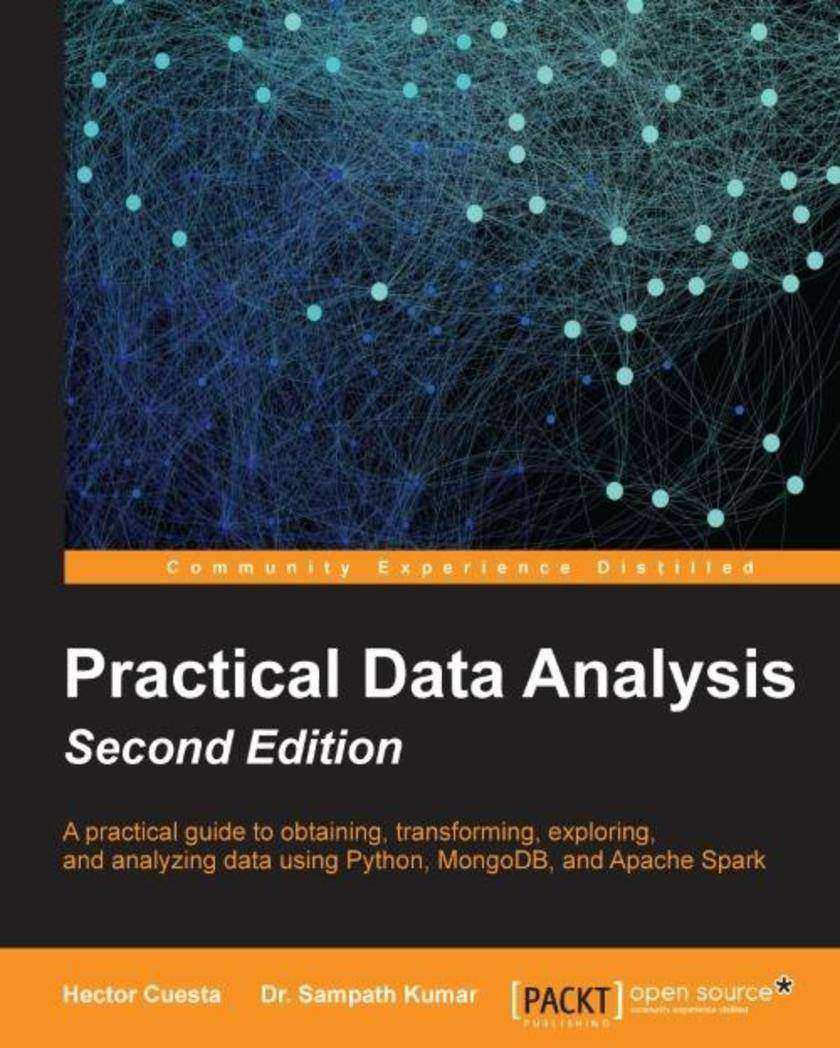
Practical Data Analysis - Second Edition
¥90.46
A practical guide to obtaining, transforming, exploring, and analyzing data using Python, MongoDB, and Apache Spark About This Book Learn to use various data analysis tools and algorithms to classify, cluster, visualize, simulate, and forecast your data Apply Machine Learning algorithms to different kinds of data such as social networks, time series, and images A hands-on guide to understanding the nature of data and how to turn it into insight Who This Book Is For This book is for developers who want to implement data analysis and data-driven algorithms in a practical way. It is also suitable for those without a background in data analysis or data processing. Basic knowledge of Python programming, statistics, and linear algebra is assumed. What You Will Learn Acquire, format, and visualize your data Build an image-similarity search engine Generate meaningful visualizations anyone can understand Get started with analyzing social network graphs Find out how to implement sentiment text analysis Install data analysis tools such as Pandas, MongoDB, and Apache Spark Get to grips with Apache Spark Implement machine learning algorithms such as classification or forecasting In Detail Beyond buzzwords like Big Data or Data Science, there are a great opportunities to innovate in many businesses using data analysis to get data-driven products. Data analysis involves asking many questions about data in order to discover insights and generate value for a product or a service. This book explains the basic data algorithms without the theoretical jargon, and you’ll get hands-on turning data into insights using machine learning techniques. We will perform data-driven innovation processing for several types of data such as text, Images, social network graphs, documents, and time series, showing you how to implement large data processing with MongoDB and Apache Spark. Style and approach This is a hands-on guide to data analysis and data processing. The concrete examples are explained with simple code and accessible data.
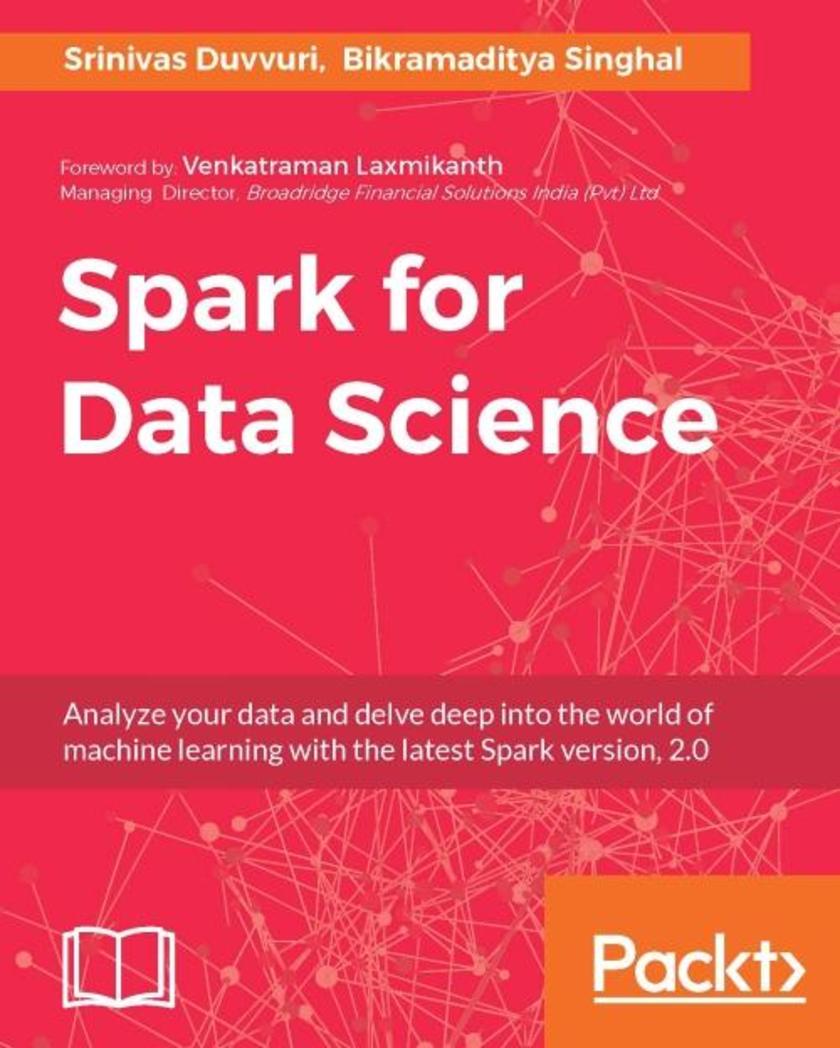
Spark for Data Science
¥90.46
Analyze your data and delve deep into the world of machine learning with the latest Spark version, 2.0 About This Book Perform data analysis and build predictive models on huge datasets that leverage Apache Spark Learn to integrate data science algorithms and techniques with the fast and scalable computing features of Spark to address big data challenges Work through practical examples on real-world problems with sample code snippets Who This Book Is For This book is for anyone who wants to leverage Apache Spark for data science and machine learning. If you are a technologist who wants to expand your knowledge to perform data science operations in Spark, or a data scientist who wants to understand how algorithms are implemented in Spark, or a newbie with minimal development experience who wants to learn about Big Data Analytics, this book is for you! What You Will Learn Consolidate, clean, and transform your data acquired from various data sources Perform statistical analysis of data to find hidden insights Explore graphical techniques to see what your data looks like Use machine learning techniques to build predictive models Build scalable data products and solutions Start programming using the RDD, DataFrame and Dataset APIs Become an expert by improving your data analytical skills In Detail This is the era of Big Data. The words ‘Big Data’ implies big innovation and enables a competitive advantage for businesses. Apache Spark was designed to perform Big Data analytics at scale, and so Spark is equipped with the necessary algorithms and supports multiple programming languages. Whether you are a technologist, a data scientist, or a beginner to Big Data analytics, this book will provide you with all the skills necessary to perform statistical data analysis, data visualization, predictive modeling, and build scalable data products or solutions using Python, Scala, and R. With ample case studies and real-world examples, Spark for Data Science will help you ensure the successful execution of your data science projects. Style and approach This book takes a step-by-step approach to statistical analysis and machine learning, and is explained in a conversational and easy-to-follow style. Each topic is explained sequentially with a focus on the fundamentals as well as the advanced concepts of algorithms and techniques. Real-world examples with sample code snippets are also included.
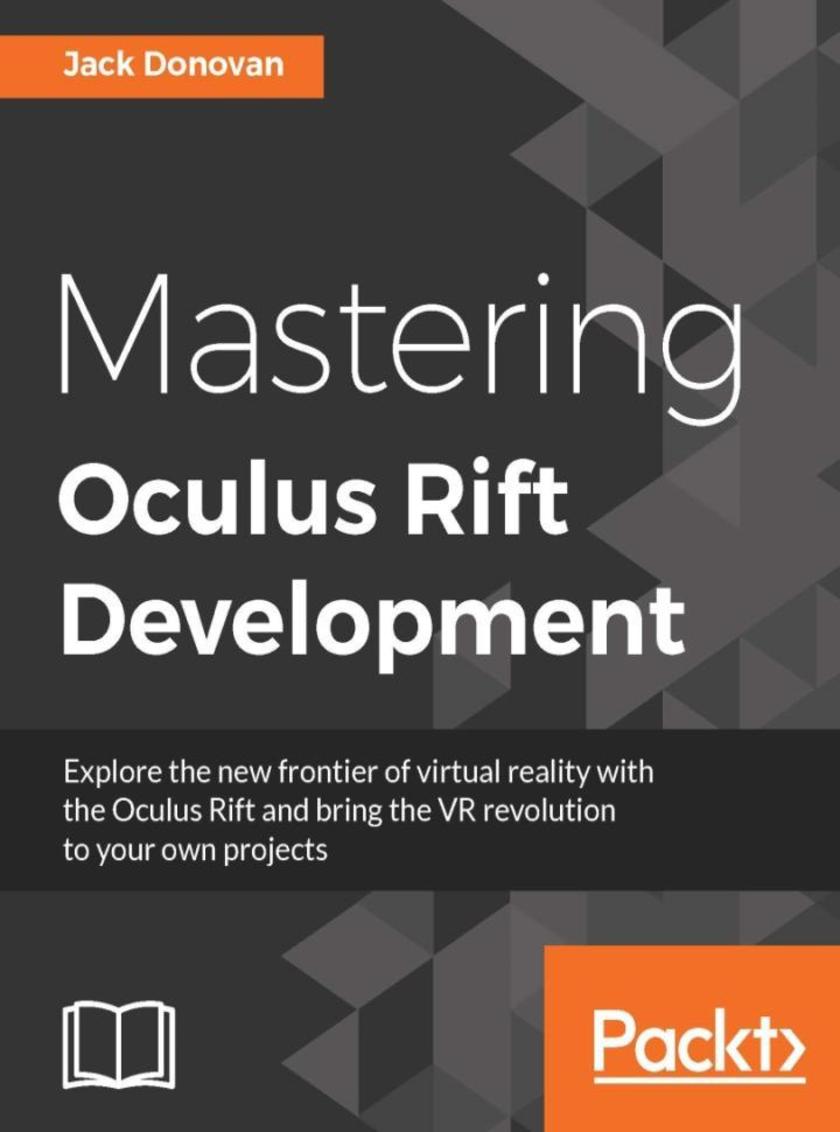
Mastering Oculus Rift Development
¥90.46
Explore the new frontier of virtual reality with the Oculus Rift and bring the VR revolution to your own projects About This Book Create immersive 3D games especially designed for the Oculus Rift platform Build complex realistic virtual reality (VR) games with the Unity Engine Create striking VR environments with advanced graphical techniques Who This Book Is For This book is for aspiring indie developers and VR enthusiasts who want to bring their ideas into virtual reality with a new platform that provides an unprecedented level of realism and immersion. What You Will Learn Increase immersion with 3D audio and intuitive interfaces Create group VR experiences using multi-player networking Design fun and engaging mechanics that utilize VR principles Explore the best ways to navigate and interact using the Oculus Rift Design intuitive ways to navigate and interact with scenes in VR Add stunning realism to a scene with three-dimensional audio Invent mechanics and features that take full advantage of VR hardware In Detail Virtual reality (VR) is changing the world of gaming and entertainment as we know it. VR headsets such as the Oculus Rift immerse players in a virtual world by tracking their head movements and simulating depth, giving them the feeling that they are actually present in the environment. We will first use the Oculus SDK in the book and will then move on to the widely popular Unity Engine, showing you how you can add that extra edge to your VR games using the power of Unity. In this book, you’ll learn how to take advantage of this new medium by designing around each of its unique features. This book will demonstrate the Unity 5 game engine, one of most widely-used engines for VR development, and will take you through a comprehensive project that covers everything necessary to create and publish a complete VR experience for the Oculus Rift. You will also be able to identify the common perils and pitfalls of VR development to ensure that your audience has the most comfortable experience possible. By the end of the book, you will be able to create an advanced VR game for the Oculus Rift, and you’ll have everything you need to bring your ideas into a new reality. Style and approach This book takes a step-by-step tutorial approach with illustrative examples to help you implement the projects on your own. The book lets you first get to grips with the Oculus SDK and then moves on to the Unity Engine to add realistic graphics and features in your games.
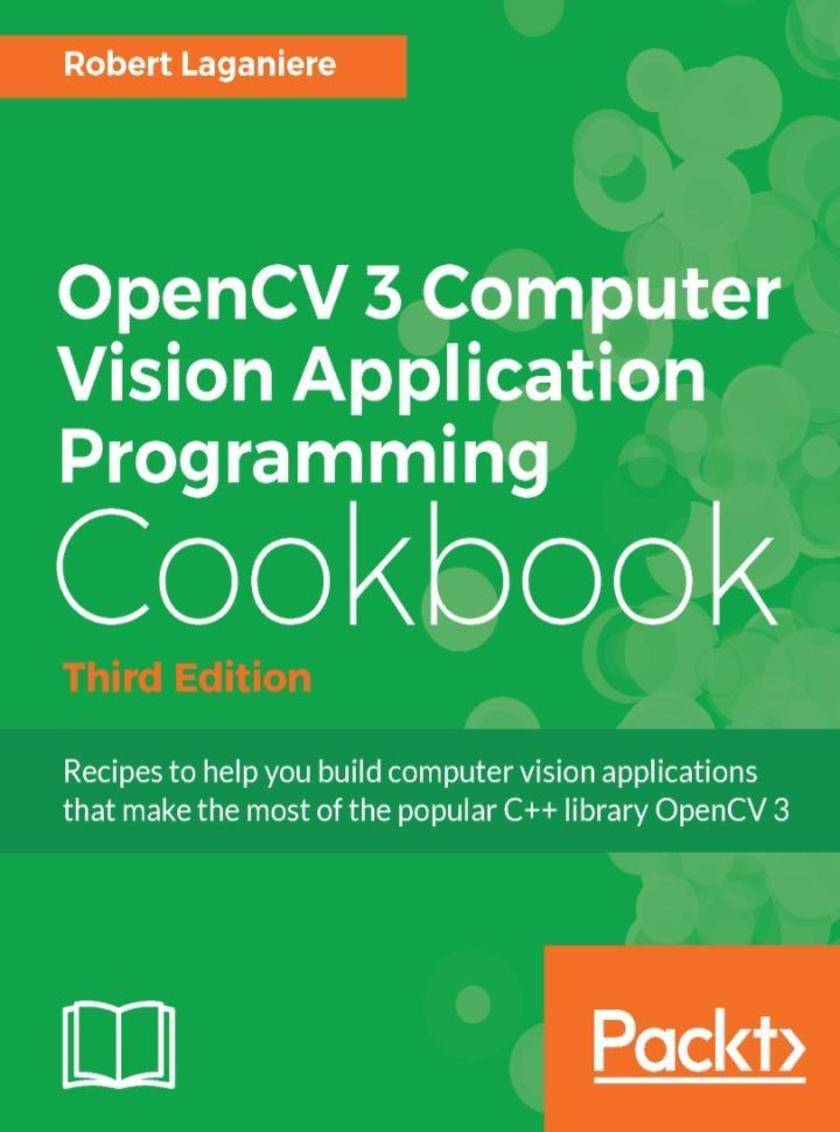
OpenCV 3 Computer Vision Application Programming Cookbook - Third Edition
¥90.46
Recipes to help you build computer vision applications that make the most of the popular C++ library OpenCV 3 About This Book Written to the latest, gold-standard specification of OpenCV 3 Master OpenCV, the open source library of the computer vision community Master fundamental concepts in computer vision and image processing Learn about the important classes and functions of OpenCV with complete working examples applied to real images Who This Book Is For OpenCV 3 Computer Vision Application Programming Cookbook Third Edition is appropriate for novice C++ programmers who want to learn how to use the OpenCV library to build computer vision applications. It is also suitable for professional software developers who wish to be introduced to the concepts of computer vision programming. It can also be used as a companion book for university-level computer vision courses. It constitutes an excellent reference for graduate students and researchers in image processing and computer vision. What You Will Learn Install and create a program using the OpenCV library Process an image by manipulating its pixels Analyze an image using histograms Segment images into homogenous regions and extract meaningful objects Apply image filters to enhance image content Exploit the image geometry in order to relay different views of a pictured scene Calibrate the camera from different image observations Detect people and objects in images using machine learning techniques Reconstruct a 3D scene from images In Detail Making your applications see has never been easier with OpenCV. With it, you can teach your robot how to follow your cat, write a program to correctly identify the members of One Direction, or even help you find the right colors for your redecoration. OpenCV 3 Computer Vision Application Programming Cookbook Third Edition provides a complete introduction to the OpenCV library and explains how to build your first computer vision program. You will be presented with a variety of computer vision algorithms and exposed to important concepts in image and video analysis that will enable you to build your own computer vision applications. This book helps you to get started with the library, and shows you how to install and deploy the OpenCV library to write effective computer vision applications following good programming practices. You will learn how to read and write images and manipulate their pixels. Different techniques for image enhancement and shape analysis will be presented. You will learn how to detect specific image features such as lines, circles or corners. You will be introduced to the concepts of mathematical morphology and image filtering. The most recent methods for image matching and object recognition are described, and you’ll discover how to process video from files or cameras, as well as how to detect and track moving objects. Techniques to achieve camera calibration and perform multiple-view analysis will also be explained. Finally, you’ll also get acquainted with recent approaches in machine learning and object classification. Style and approach This book will arm you with the basics you need to start writing world-aware applications right from a pixel level all the way through to processing video sequences.
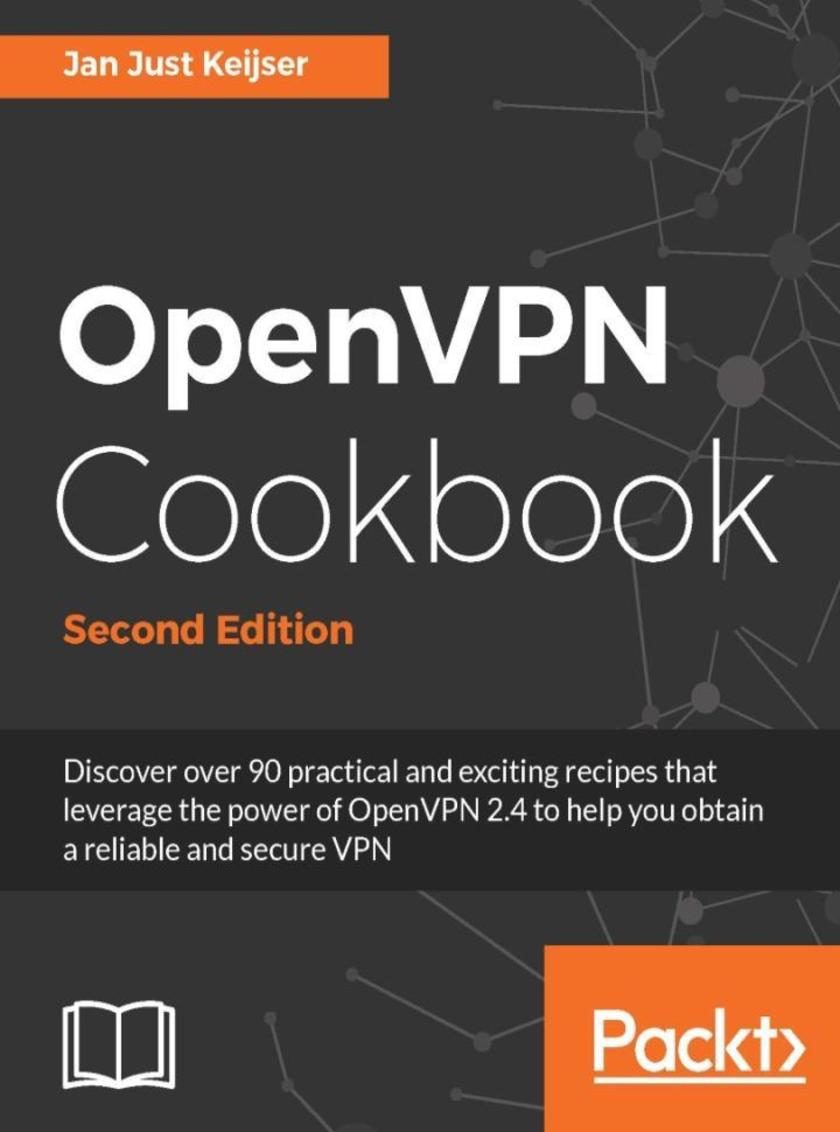
OpenVPN Cookbook - Second Edition
¥90.46
Discover over 90 practical and exciting recipes that leverage the power of OpenVPN 2.4 to help you obtain a reliable and secure VPN About This Book Master the skills of configuring, managing, and securing your VPN using the latest OpenVPN Gain expertise in establishing IPv6 connections and understand PolarSSL using the latest version of OpenVPN This book contains enticing recipes about OpenVPN functionalities that cater to mission critical applications Who This Book Is For This book is for system administrators who have a basic knowledge of OpenVPN and are eagerly waiting to build, secure, and manage VPNs using the latest version. This book assumes some prior knowledge of TCP/IP networking and OpenVPN and you must have network administration skills to get the most out of this book. What You Will Learn Determine the best type of OpenVPN setup for your networking needs Get to grips with the encryption, authentication, and certifications features of OpenSSL. Integrate an OpenVPN server into the local IT infrastructure with the *ing features of OpenVPN Ease the integration of Windows clients into the VPN using Windows-specific client-side configuration Understand the authentication plugins for PAM and LDAP Get to know the difference between TUN-style and TAP-style networks and when to use what Troubleshoot your VPN setup Establish a connection via IPv6 along with demonstrations In Detail OpenVPN provides an extensible VPN framework that has been designed to ease site-specific customization, such as providing the capability to distribute a customized installation package to clients, and supporting alternative authentication methods via OpenVPN’s plugin module interface. This book provides you with many different recipes to help you set up, monitor, and troubleshoot an OpenVPN network. You will learn to configure a scalable, load-balanced VPN server farm that can handle thousands of dynamic connections from incoming VPN clients. You will also get to grips with the encryption, authentication, security, extensibility, and certifications features of OpenSSL. You will also get an understanding of IPv6 support and will get a demonstration of how to establish a connection via IPv64. This book will explore all the advanced features of OpenVPN and even some undocumented options, covering all the common network setups such as point-to-point networks and multi-client TUN-style and TAP-style networks. Finally, you will learn to manage, secure, and troubleshoot your virtual private networks using OpenVPN 2.4. Style and approach This practical, recipe-based book covers the core functionalities of OpenVPN ending with troubleshooting, performance tuning and making the readers inquisitive about the advanced features.
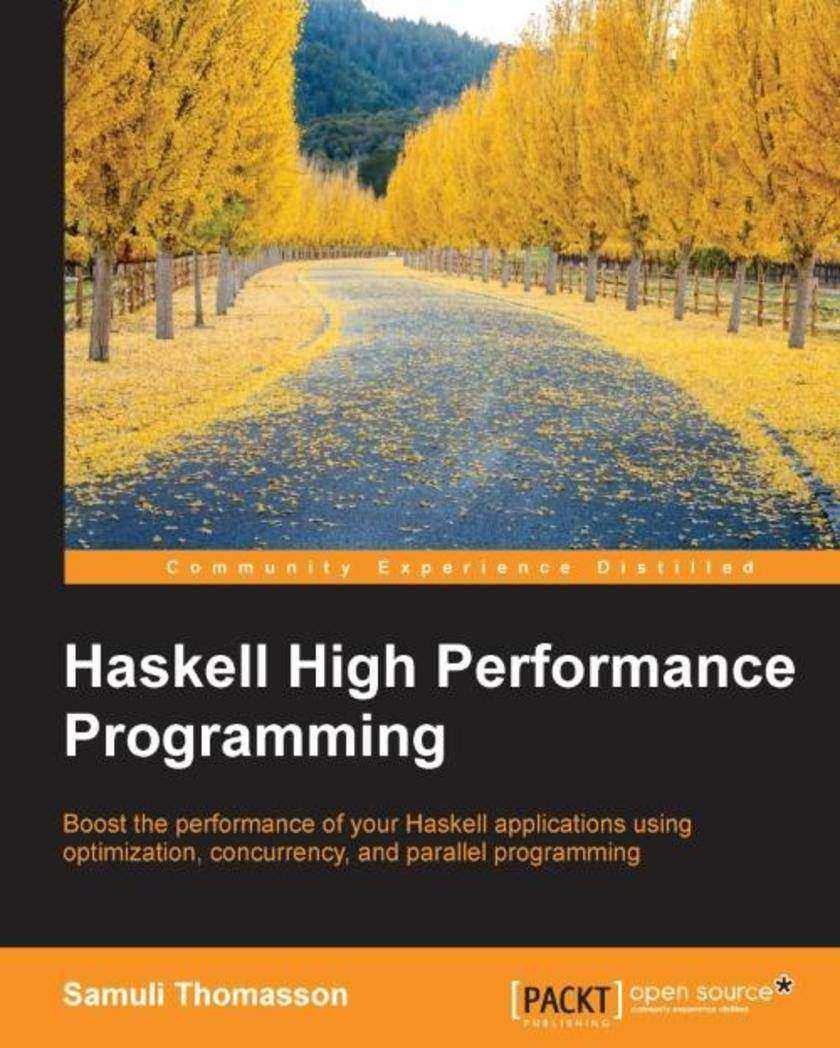
Haskell High Performance Programming
¥90.46
Boost the performance of your Haskell applications using optimization, concurrency, and parallel programming About This Book Explore the benefits of lazy evaluation, compiler features, and tools and libraries designed for high performance Write fast programs at extremely high levels of abstraction Work through practical examples that will help you address the challenges of writing efficient code Who This Book Is For To get the most out of this book, you need to have a working knowledge of reading and writing basic Haskell. No knowledge of performance, optimization, or concurrency is required. What You Will Learn Program idiomatic Haskell that's also surprisingly efficient Improve performance of your code with data parallelism, inlining, and strictness annotations Profile your programs to identify space leaks and missed opportunities for optimization Find out how to choose the most efficient data and control structures Optimize the Glasgow Haskell Compiler and runtime system for specific programs See how to smoothly drop to lower abstractions wherever necessary Execute programming for the GPU with Accelerate Implement programming to easily scale to the cloud with Cloud Haskell In Detail Haskell, with its power to optimize the code and its high performance, is a natural candidate for high performance programming. It is especially well suited to stacking abstractions high with a relatively low performance cost. This book addresses the challenges of writing efficient code with lazy evaluation and techniques often used to optimize the performance of Haskell programs. We open with an in-depth look at the evaluation of Haskell expressions and discuss optimization and benchmarking. You will learn to use parallelism and we'll explore the concept of streaming. We’ll demonstrate the benefits of running multithreaded and concurrent applications. Next we’ll guide you through various profiling tools that will help you identify performance issues in your program. We’ll end our journey by looking at GPGPU, Cloud and Functional Reactive Programming in Haskell. At the very end there is a catalogue of robust library recommendations with code samples. By the end of the book, you will be able to boost the performance of any app and prepare it to stand up to real-world punishment. Style and approach This easy-to-follow guide teaches new practices and techniques to optimize your code, and then moves towards more advanced ways to effectively write efficient Haskell code. Small and simple practical examples will help you test the concepts yourself, and you will be able to easily adapt them for any application.
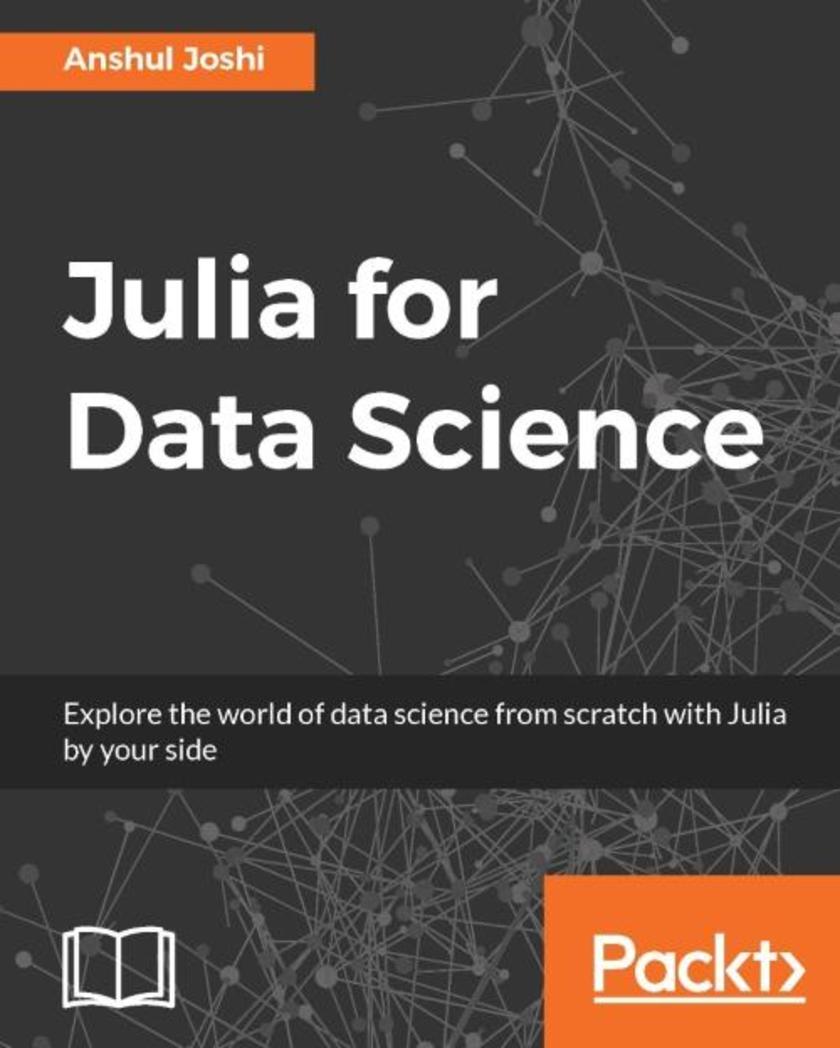
Julia for Data Science
¥90.46
Explore the world of data science from scratch with Julia by your side About This Book An in-depth exploration of Julia's growing ecosystem of packages Work with the most powerful open-source libraries for deep learning, data wrangling, and data visualization Learn about deep learning using Mocha.jl and give speed and high performance to data analysis on large data sets Who This Book Is For This book is aimed at data analysts and aspiring data scientists who have a basic knowledge of Julia or are completely new to it. The book also appeals to those competent in R and Python and wish to adopt Julia to improve their skills set in Data Science. It would be beneficial if the readers have a good background in statistics and computational mathematics. What You Will Learn Apply statistical models in Julia for data-driven decisions Understanding the process of data munging and data preparation using Julia Explore techniques to visualize data using Julia and D3 based packages Using Julia to create self-learning systems using cutting edge machine learning algorithms Create supervised and unsupervised machine learning systems using Julia. Also, explore ensemble models Build a recommendation engine in Julia Dive into Julia’s deep learning framework and build a system using Mocha.jl In Detail Julia is a fast and high performing language that's perfectly suited to data science with a mature package ecosystem and is now feature complete. It is a good tool for a data science practitioner. There was a famous post at Harvard Business Review that Data Scientist is the sexiest job of the 21st century. (https://hbr.org/2012/10/data-scientist-the-sexiest-job-of-the-21st-century). This book will help you get familiarised with Julia's rich ecosystem, which is continuously evolving, allowing you to stay on top of your game. This book contains the essentials of data science and gives a high-level overview of advanced statistics and techniques. You will dive in and will work on generating insights by performing inferential statistics, and will reveal hidden patterns and trends using data mining. This has the practical coverage of statistics and machine learning. You will develop knowledge to build statistical models and machine learning systems in Julia with attractive visualizations. You will then delve into the world of Deep learning in Julia and will understand the framework, Mocha.jl with which you can create artificial neural networks and implement deep learning. This book addresses the challenges of real-world data science problems, including data cleaning, data preparation, inferential statistics, statistical modeling, building high-performance machine learning systems and creating effective visualizations using Julia. Style and approach This practical and easy-to-follow yet comprehensive guide will get you learning about Julia with respect to data science. Each topic is explained thoroughly and placed in context. For the more inquisitive, we dive deeper into the language and its use case. This is the one true guide to working with Julia in data science.
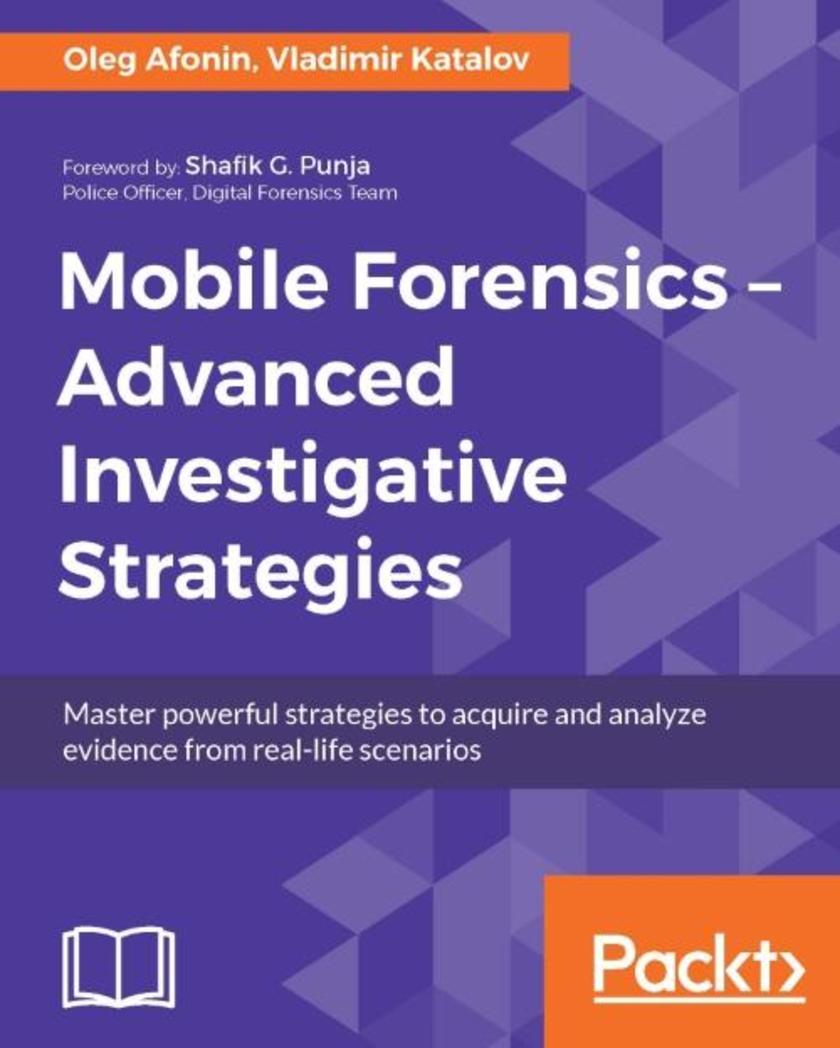
Mobile Forensics – Advanced Investigative Strategies
¥90.46
Master powerful strategies to acquire and analyze evidence from real-life scenarios About This Book A straightforward guide to address the roadblocks face when doing mobile forensics Simplify mobile forensics using the right mix of methods, techniques, and tools Get valuable advice to put you in the mindset of a forensic professional, regardless of your career level or experience Who This Book Is For This book is for forensic analysts and law enforcement and IT security officers who have to deal with digital evidence as part of their daily job. Some basic familiarity with digital forensics is assumed, but no experience with mobile forensics is required. What You Will Learn Understand the challenges of mobile forensics Grasp how to properly deal with digital evidence Explore the types of evidence available on iOS, Android, Windows, and BlackBerry mobile devices Know what forensic outcome to expect under given circumstances Deduce when and how to apply physical, logical, over-the-air, or low-level (advanced) acquisition methods Get in-depth knowledge of the different acquisition methods for all major mobile platforms Discover important mobile acquisition tools and techniques for all of the major platforms In Detail Investigating digital media is impossible without forensic tools. Dealing with complex forensic problems requires the use of dedicated tools, and even more importantly, the right strategies. In this book, you’ll learn strategies and methods to deal with information stored on smartphones and tablets and see how to put the right tools to work. We begin by helping you understand the concept of mobile devices as a source of valuable evidence. Throughout this book, you will explore strategies and "plays" and decide when to use each technique. We cover important techniques such as seizing techniques to shield the device, and acquisition techniques including physical acquisition (via a USB connection), logical acquisition via data backups, over-the-air acquisition. We also explore cloud analysis, evidence discovery and data analysis, tools for mobile forensics, and tools to help you discover and analyze evidence. By the end of the book, you will have a better understanding of the tools and methods used to deal with the challenges of acquiring, preserving, and extracting evidence stored on smartphones, tablets, and the cloud. Style and approach This book takes a unique strategy-based approach, executing them on real-world scenarios. You will be introduced to thinking in terms of "game plans," which are essential to succeeding in analyzing evidence and conducting investigations.
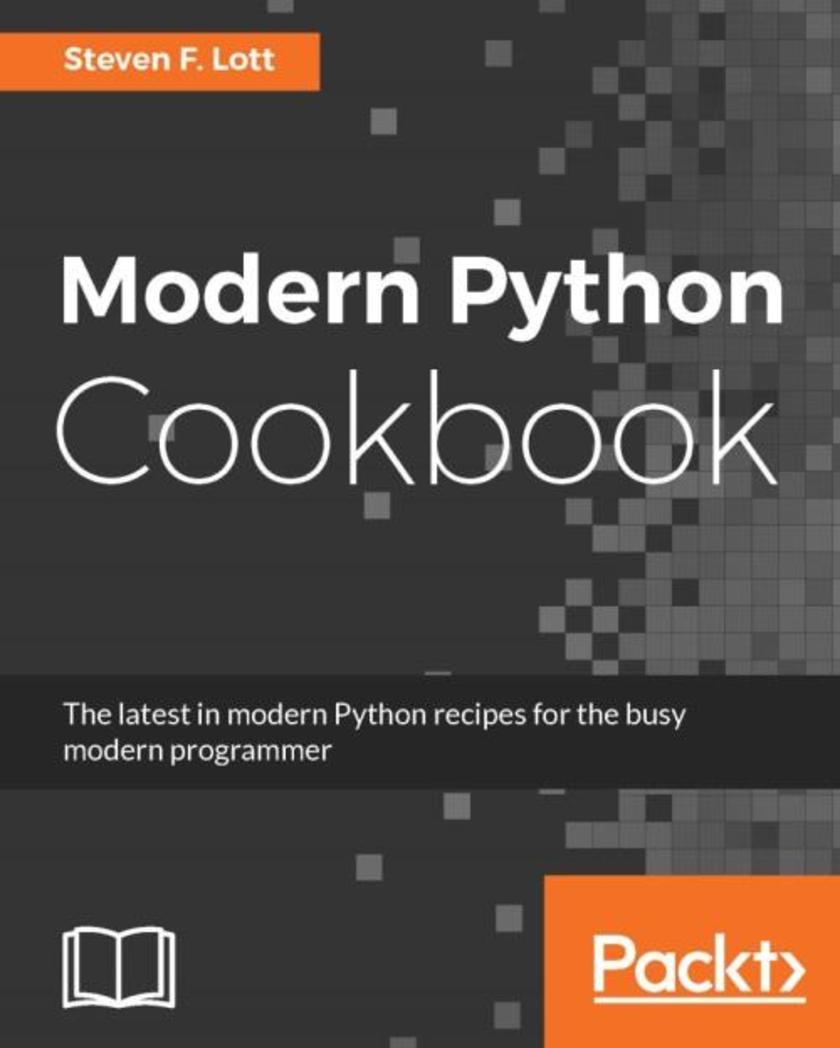
Modern Python Cookbook
¥90.46
The latest in modern Python recipes for the busy modern programmer About This Book Develop succinct, expressive programs in Python Learn the best practices and common idioms through carefully explained and structured recipes Discover new ways to apply Python for the new age of development Who This Book Is For The book is for web developers, programmers, enterprise programmers, engineers, big data scientist, and so on. If you are a beginner, Python Cookbook will get you started. If you are experienced, it will expand your knowledge base. A basic knowledge of programming would help. What You Will Learn See the intricate details of the Python syntax and how to use it to your advantage Improve your code readability through functions in Python Manipulate data effectively using built-in data structures Get acquainted with advanced programming techniques in Python Equip yourself with functional and statistical programming features Write proper tests to be sure a program works as advertised Integrate application software using Python In Detail Python is the preferred choice of developers, engineers, data scientists, and hobbyists everywhere. It is a great *ing language that can power your applications and provide great speed, safety, and scalability. By exposing Python as a series of simple recipes, you can gain insight into specific language features in a particular context. Having a tangible context helps make the language or standard library feature easier to understand. This book comes with over 100 recipes on the latest version of Python. The recipes will benefit everyone ranging from beginner to an expert. The book is broken down into 13 chapters that build from simple language concepts to more complex applications of the language. The recipes will touch upon all the necessary Python concepts related to data structures, OOP, functional programming, as well as statistical programming. You will get acquainted with the nuances of Python syntax and how to effectively use the advantages that it offers. You will end the book equipped with the knowledge of testing, web services, and configuration and application integration tips and tricks. The recipes take a problem-solution approach to resolve issues commonly faced by Python programmers across the globe. You will be armed with the knowledge of creating applications with flexible logging, powerful configuration, and command-line options, automated unit tests, and good documentation. Style and approach This book takes a recipe-based approach, where each recipe addresses specific problems and issues. The recipes provide discussions and insights and an explanation of the problems.

Cracking the IT Architect Interview
¥90.46
The ultimate guide to successful interviews for Enterprise, Business, Domain, Solution, and Technical Architect roles as well as IT Advisory Consultant and Software Designer roles About This Book Learn about Enterprise Architects IT strategy and NFR – this book provides you with methodologies, best practices, and frameworks to ace your interview A holistic view of key architectural skills and competencies with 500+ questions that cover 12 domains 100+ diagrams depicting scenarios, models, and methodologies designed to help you prepare for your interview Who This Book Is For This book is for aspiring enterprise, business, domain, solution, and technical architects. It is also ideal for IT advisory consultants and IT designers who wish to interview for such a role. Interviewers will be able leverage this book to make sure they hire candidates with the right competencies to meet the role requirements. What You Will Learn Learn about IT strategies, NFR, methodologies, best practices, and frameworks to ace your interview Get a holistic view of key concepts, design principles, and patterns related to evangelizing web and Java enterprise applications Discover interview preparation guidelines through case studies Use this as a reference guide for adopting best practices, standards, and design guidelines Get a better understanding with 60+ diagrams depicting various scenarios, models, and methodologies Benefit from coverage of all architecture domains including EA (Business, Data, Infrastructure, and Application), SA, integration, NFRs, security, and SOA, with extended coverage from IT strategies to the NFR domain In Detail An architect attends multiple interviews for jobs or projects during the course of his or her career. This book is an interview resource created for designers, consultants, technical, solution, domain, enterprise, and chief architects to help them perform well in interview discussions and launch a successful career. The book begins by providing de*ions of architecture skills and competencies that cover the 12 key domains, including 350+ questions relating to these domains. The goal of this book is to cover all the core architectural domains. From an architect’s perspective, it is impossible to revise or learn about all these key areas without a good reference guide – this book is the solution. It shares experiences, learning, insights, and proven methodologies that will benefit practitioners, SMEs, and aspirants in the long run. This book will help you tackle the NFR domain, which is a key aspect pertaining to architecting applications. It typically takes years to understand the core concepts, fundamentals, patterns, and principles related to architecture and designs. This book is a goldmine for the typical questions asked during an interview and will help prepare you for success! Style and approach This book will help you prepare for interviews for architectural profiles by providing likely questions, explanations, and expected answers. It is an insight-rich guide that will help you develop strategic, tactical, and operational thinking for your interview.
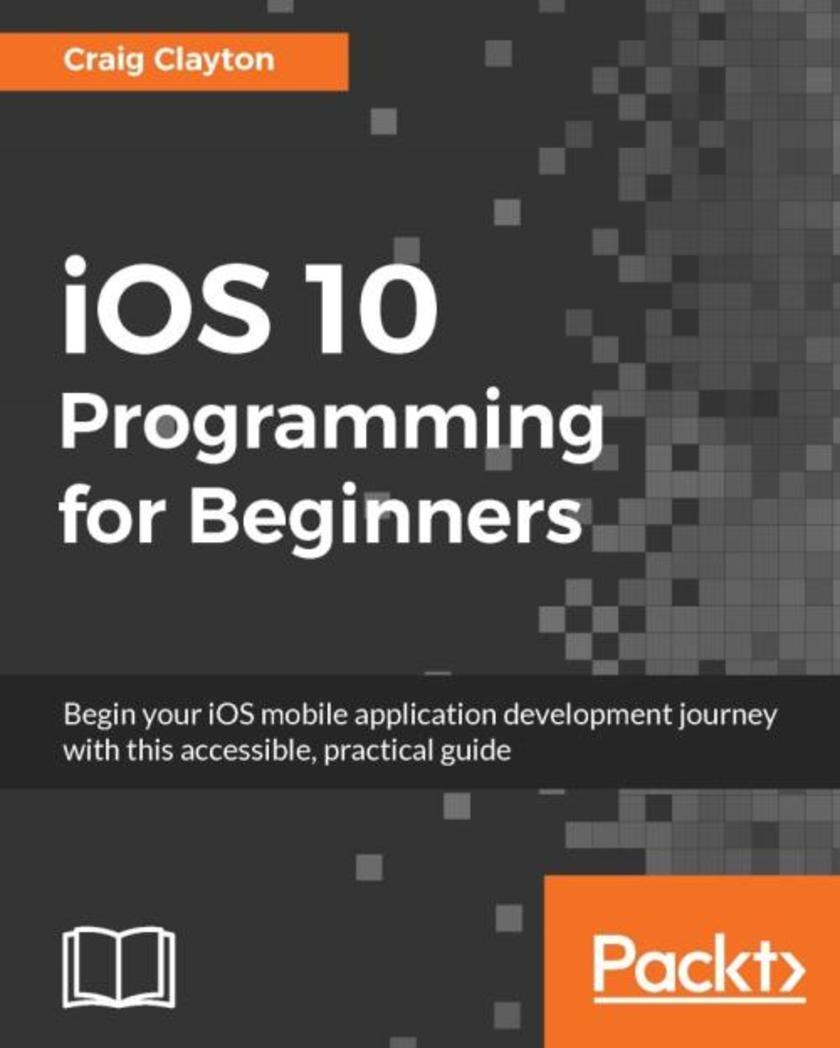
iOS 10 Programming for Beginners
¥90.46
Begin your iOS mobile application development journey with this accessible, practical guide About This Book Use Swift 3 and latest iOS 10 features to build awesome apps for iPhone and iPad Explore and use a wide range of Apple development tools to become a confident iOS developer From prototype to App Store—find out how to build an app from start to finish! Who This Book Is For This book is for beginners who want to be able to create iOS applications. If you have some programming experience, this book is a great way to get a full understanding of how to create an iOS application from scratch and submit it to the App Store. You do not need any knowledge of Swift or any prior programming experience. What You Will Learn Get to grips with Swift 3 and Xcode, the building blocks of Apple development Get to know the fundamentals of Swift, including variables, constants, and control flow Discover the distinctive design principles that define the iOS user experience See how to prototype your app with Swift’s Playgrounds feature Build a responsive UI that looks great on a range of devices Find out how to use CoreLocation to add location services to your app Add push notifications to your app Make your app able to be used on both iPhone and iPad In Detail You want to build iOS applications for iPhone and iPad—but where do you startForget sifting through tutorials and blog posts, this is a direct route into iOS development, taking you through the basics and showing you how to put the principles into practice. With every update, iOS has become more and more developer-friendly, so take advantage of it and begin building applications that might just take the App Store by storm! Whether you’re an experienced programmer or a complete novice, this book guides you through every facet of iOS development. From Xcode and Swift—the building blocks of modern Apple development—and Playgrounds for beginners, one of the most popular features of the iOS development experience, you’ll quickly gain a solid foundation to begin venturing deeper into your development journey. For the experienced programmer, jump right in and learn the latest iOS 10 features. You’ll also learn the core elements of iOS design, from tables to tab bars, as well as more advanced topics such as gestures and animations that can give your app the edge. Find out how to manage databases, as well as integrating standard elements such as photos, GPS into your app. With further guidance on beta testing with TestFlight, you’ll quickly learn everything you need to get your project on the App Store! Style and approach Created for anyone that wants to build their first iOS application, this book offers practical, actionable guidance through iOS development. Combining engaging visuals with accessible, step-by-step instructiona and explanation, this book will not only develop the your understanding, but also show you how to put your knowledge to work.
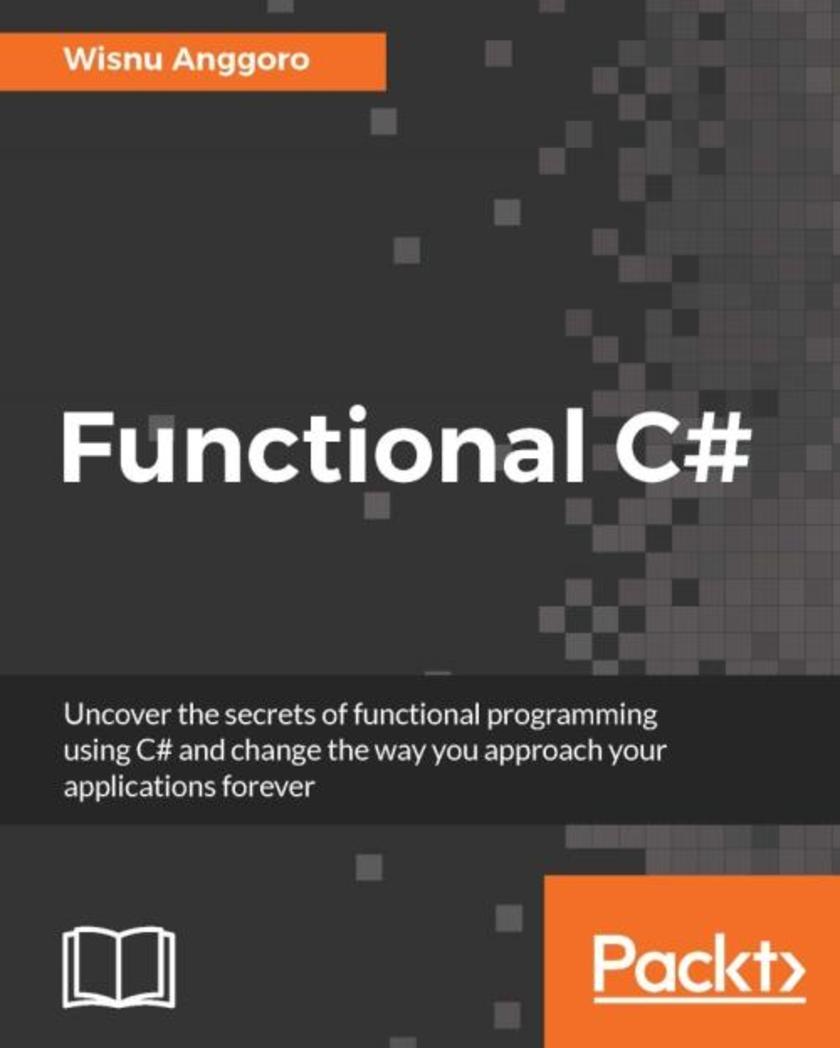
Functional C#
¥90.46
Uncover the secrets of functional programming using C# and change the way you approach your applications forever About This Book This book focuses on the functional paradigm of C#, which will give you a whole new angle on coding with C# It illustrates the advantages that functional programming brings to the table and the associated coding benefits This practical guide covers all the aspects of functional programming and provides solutions that can be applied in business scenarios Who This Book Is For This book is suitable for C# developers with basic prior knowledge of C# and with no functional programming experience at all. What You Will Learn Develop an application using the functional approach Implement unit testing to functionally program code Create efficient code using functional programming Work through a LINQ query so you can work with data Compose asynchronous programs to create a responsive application Use recursion in function programming in order to simplify code Optimize the program code using Laziness and Caching Techniques In Detail Functional programming makes your application faster, improves performance, and increases your productivity. C# code is written at a higher level of abstraction, so that code will be closer to business requirements, abstracting away many low-level implementation details. This book bridges the language gap for C# developers by showing you how to create and consume functional constructs in C#. We also bridge the domain gap by showing how functional constructs can be applied in business scenarios. We’ll take you through lambda expressions and extension methods, and help you develop a deep understanding of the concepts and practices of LINQ and recursion in C#. By the end of the book, you will be able to write code using the best approach and will be able to perform unit testing in functional programming, changing how you write your applications and revolutionizing your projects. Style and approach This book takes a pragmatic approach and shows you techniques to write better functional constructs in C#. We’ll also show you how these concepts can be applied in business scenarios.
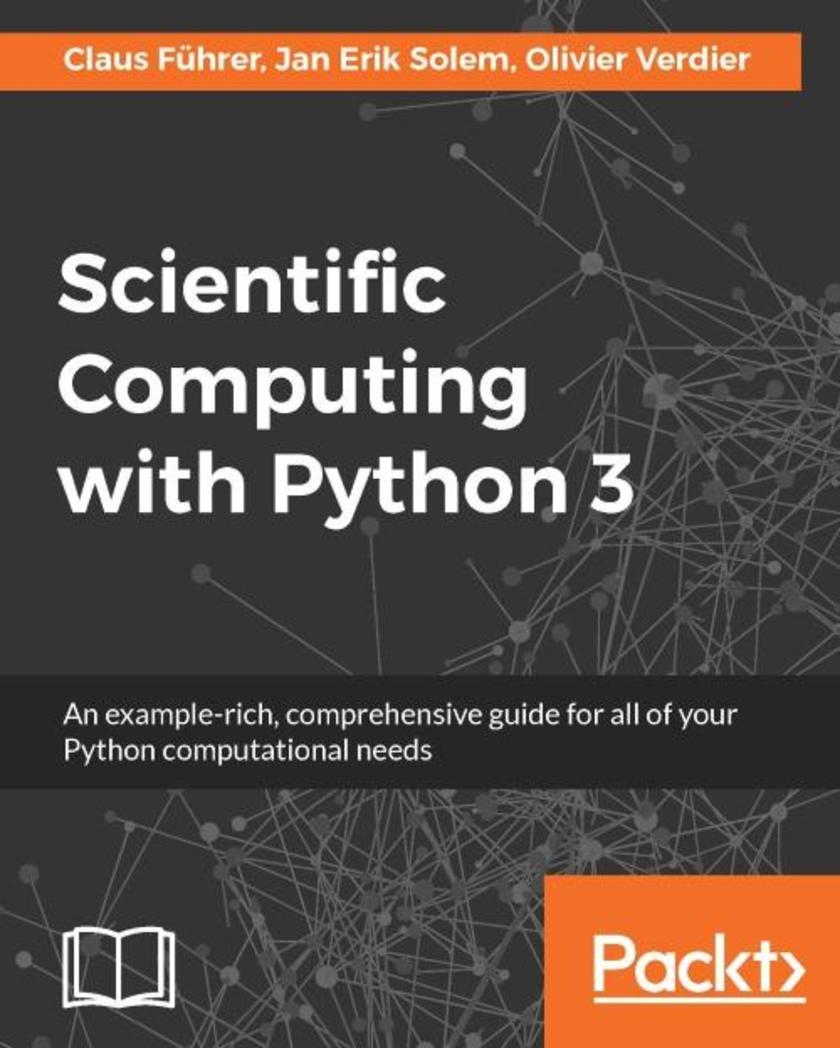
Scientific Computing with Python 3
¥90.46
An example-rich, comprehensive guide for all of your Python computational needs About This Book Your ultimate resource for getting up and running with Python numerical computations Explore numerical computing and mathematical libraries using Python 3.x code with SciPy and NumPy modules A hands-on guide to implementing mathematics with Python, with complete coverage of all the key concepts Who This Book Is For This book is for anyone who wants to perform numerical and mathematical computations in Python. It is especially useful for developers, students, and anyone who wants to use Python for computation. Readers are expected to possess basic a knowledge of scientific computing and mathematics, but no prior experience with Python is needed. What You Will Learn The principal syntactical elements of Python The most important and basic types in Python The essential building blocks of computational mathematics, linear algebra, and related Python objects Plot in Python using matplotlib to create high quality figures and graphics to draw and visualize your results Define and use functions and learn to treat them as objects How and when to correctly apply object-oriented programming for scientific computing in Python Handle exceptions, which are an important part of writing reliable and usable code Two aspects of testing for scientific programming: Manual and Automatic In Detail Python can be used for more than just general-purpose programming. It is a free, open source language and environment that has tremendous potential for use within the domain of scientific computing. This book presents Python in tight connection with mathematical applications and demonstrates how to use various concepts in Python for computing purposes, including examples with the latest version of Python 3. Python is an effective tool to use when coupling scientific computing and mathematics and this book will teach you how to use it for linear algebra, arrays, plotting, iterating, functions, polynomials, and much more. Style and approach This book takes a concept-based approach to the language rather than a systematic introduction. It is a complete Python tutorial and introduces computing principles, using practical examples to and showing you how to correctly implement them in Python. You’ll learn to focus on high-level design as well as the intricate details of Python syntax. Rather than providing canned problems to be solved, the exercises have been designed to inspire you to think about your own code and give you real-world insight.
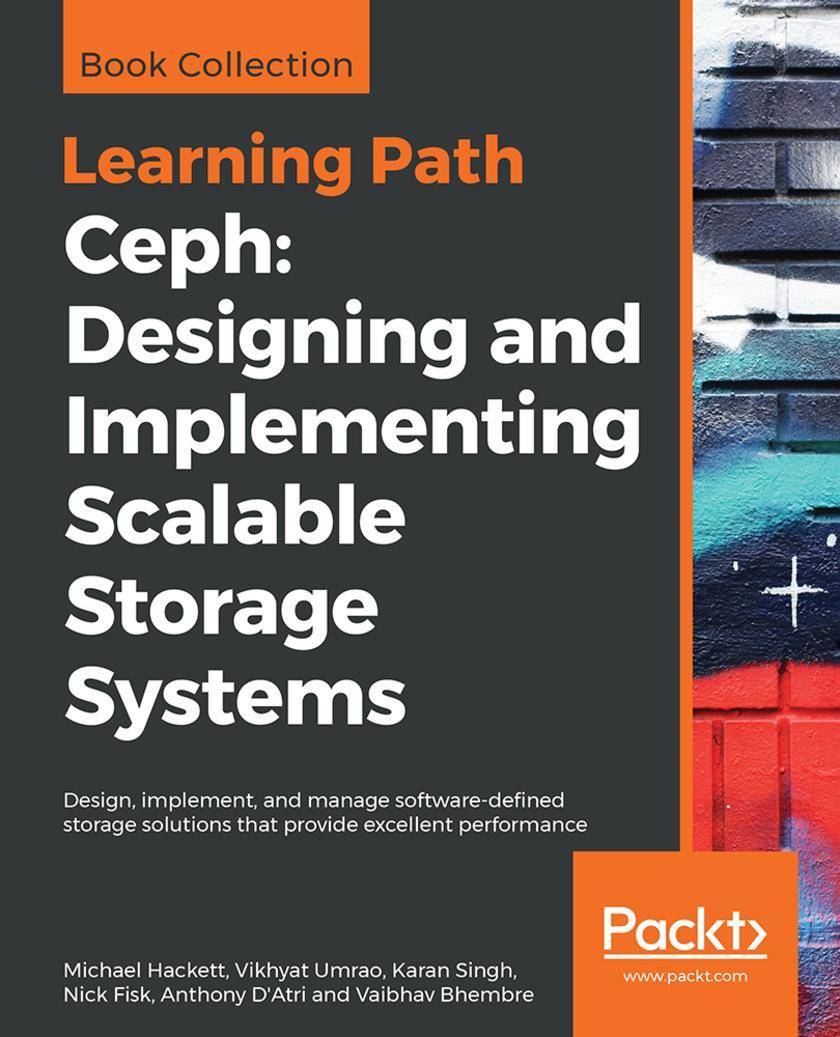
Ceph: Designing and Implementing Scalable Storage Systems
¥90.46
Get to grips with the unified, highly scalable distributed storage system and learn how to design and implement it. Key Features * Explore Ceph's architecture in detail * Implement a Ceph cluster successfully and gain deep insights into its best practices * Leverage the advanced features of Ceph, including erasure coding, tiering, and BlueStore Book Description This Learning Path takes you through the basics of Ceph all the way to gaining in-depth understanding of its advanced features. You’ll gather skills to plan, deploy, and manage your Ceph cluster. After an introduction to the Ceph architecture and its core projects, you’ll be able to set up a Ceph cluster and learn how to monitor its health, improve its performance, and troubleshoot any issues. By following the step-by-step approach of this Learning Path, you’ll learn how Ceph integrates with OpenStack, Glance, Manila, Swift, and Cinder. With knowledge of federated architecture and CephFS, you’ll use Calamari and VSM to monitor the Ceph environment. In the upcoming chapters, you’ll study the key areas of Ceph, including BlueStore, erasure coding, and cache tiering. More specifically, you’ll discover what they can do for your storage system. In the concluding chapters, you will develop applications that use Librados and distributed computations with shared object classes, and see how Ceph and its supporting infrastructure can be optimized. By the end of this Learning Path, you'll have the practical knowledge of operating Ceph in a production environment. This Learning Path includes content from the following Packt products: * Ceph Cookbook by Michael Hackett, Vikhyat Umrao and Karan Singh * Mastering Ceph by Nick Fisk * Learning Ceph, Second Edition by Anthony D'Atri, Vaibhav Bhembre and Karan Singh What you will learn * Understand the benefits of using Ceph as a storage solution * Combine Ceph with OpenStack, Cinder, Glance, and Nova components * Set up a test cluster with Ansible and virtual machine with VirtualBox * Develop solutions with Librados and shared object classes * Configure BlueStore and see its interaction with other configurations * Tune, monitor, and recover storage systems effectively * Build an erasure-coded pool by selecting intelligent parameters Who this book is for If you are a developer, system administrator, storage professional, or cloud engineer who wants to understand how to deploy a Ceph cluster, this Learning Path is ideal for you. It will help you discover ways in which Ceph features can solve your data storage problems. Basic knowledge of storage systems and GNU/Linux will be beneficial.

DevOps with Kubernetes
¥90.46
Leverage the power of Kubernetes to build an efficient software delivery pipeline. Key Features * Learn about DevOps, containers, and Kubernetes all within one handy book * A practical guide to container management and orchestration * Learn how to monitor, log, and troubleshoot your Kubernetes applications Book Description Kubernetes has been widely adopted across public clouds and on-premise data centers. As we're living in an era of microservices, knowing how to use and manage Kubernetes is an essential skill for everyone in the IT industry. This book is a guide to everything you need to know about Kubernetes—from simply deploying a container to administrating Kubernetes clusters wisely. You'll learn about DevOps fundamentals, as well as deploying a monolithic application as microservices and using Kubernetes to orchestrate them. You will then gain an insight into the Kubernetes network, extensions, authentication and authorization. With the DevOps spirit in mind, you'll learn how to allocate resources to your application and prepare to scale them efficiently. Knowing the status and activity of the application and clusters is crucial, so we’ll learn about monitoring and logging in Kubernetes. Having an improved ability to observe your services means that you will be able to build a continuous delivery pipeline with confidence. At the end of the book, you'll learn how to run managed Kubernetes services on three top cloud providers: Google Cloud Platform, Amazon Web Services, and Microsoft Azure. What you will learn * Learn fundamental and advanced DevOps skills and tools * Get a comprehensive understanding of containers * Dockerize an application * Administrate and manage Kubernetes cluster * Extend the cluster functionality with custom resources * Understand Kubernetes network and service mesh * Implement Kubernetes logging and monitoring * Manage Kubernetes services in Amazon Web Services, Google Cloud Platform,and Microsoft Azure Who this book is for This book is for anyone who wants to learn containerization and clustering in a practical way using Kubernetes. No prerequisite skills are required, however, essential DevOps skill and public/private Cloud knowledge will accelerate the reading speed. If you're advanced, you can get a deeper understanding of all the tools and technique described in the book.
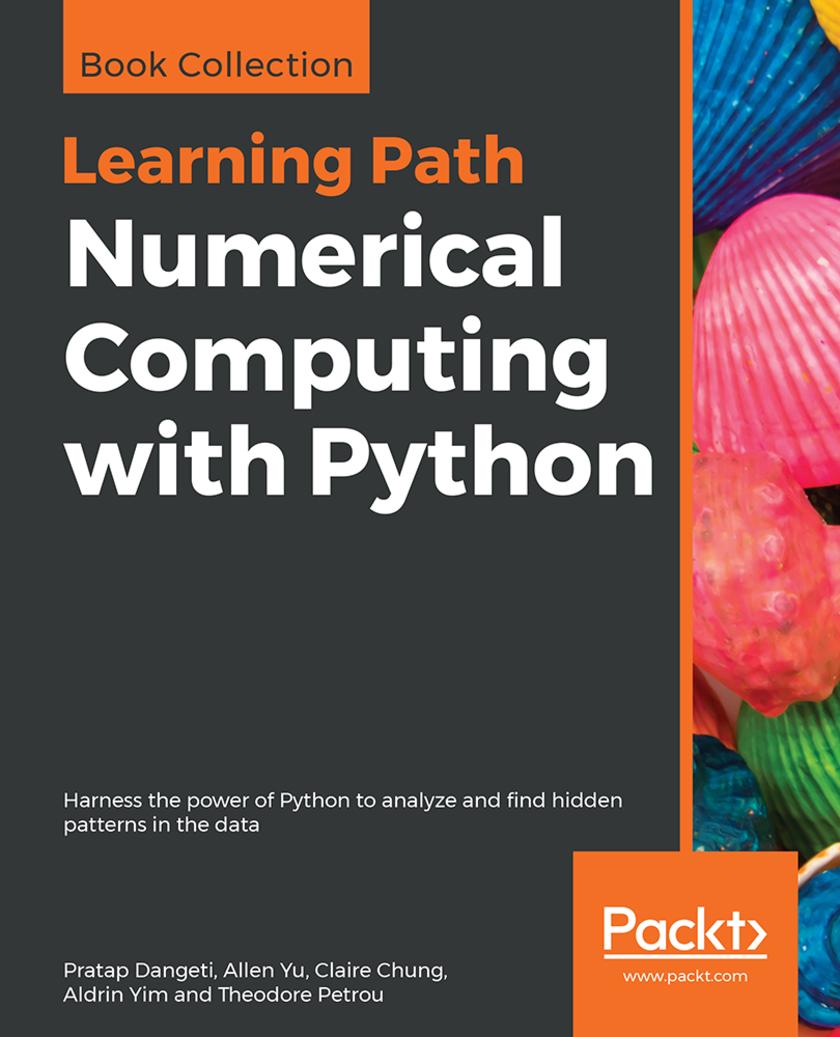
Numerical Computing with Python
¥90.46
Understand, explore, and effectively present data using the powerful data visualization techniques of Python Key Features *Use the power of Pandas and Matplotlib to easily solve data mining issues *Understand the basics of statistics to build powerful predictive data models *Grasp data mining concepts with helpful use-cases and examples Book Description Data mining, or parsing the data to extract useful insights, is a niche skill that can transform your career as a data scientist Python is a flexible programming language that is equipped with a strong suite of libraries and toolkits, and gives you the perfect platform to sift through your data and mine the insights you seek. This Learning Path is designed to familiarize you with the Python libraries and the underlying statistics that you need to get comfortable with data mining. You will learn how to use Pandas, Python's popular library to analyze different kinds of data, and leverage the power of Matplotlib to generate appealing and impressive visualizations for the insights you have derived. You will also explore different machine learning techniques and statistics that enable you to build powerful predictive models. By the end of this Learning Path, you will have the perfect foundation to take your data mining skills to the next level and set yourself on the path to become a sought-after data science professional. This Learning Path includes content from the following Packt products: *Statistics for Machine Learning by Pratap Dangeti *Matplotlib 2.x By Example by Allen Yu, Claire Chung, Aldrin Yim *Pandas Cookbook by Theodore Petrou What you will learn *Understand the statistical fundamentals to build data models *Split data into independent groups *Apply aggregations and transformations to each group *Create impressive data visualizations *Prepare your data and design models *Clean up data to ease data analysis and visualization *Create insightful visualizations with Matplotlib and Seaborn *Customize the model to suit your own predictive goals Who this book is for If you want to learn how to use the many libraries of Python to extract impactful information from your data and present it as engaging visuals, then this is the ideal Learning Path for you. Some basic knowledge of Python is enough to get started with this Learning Path.
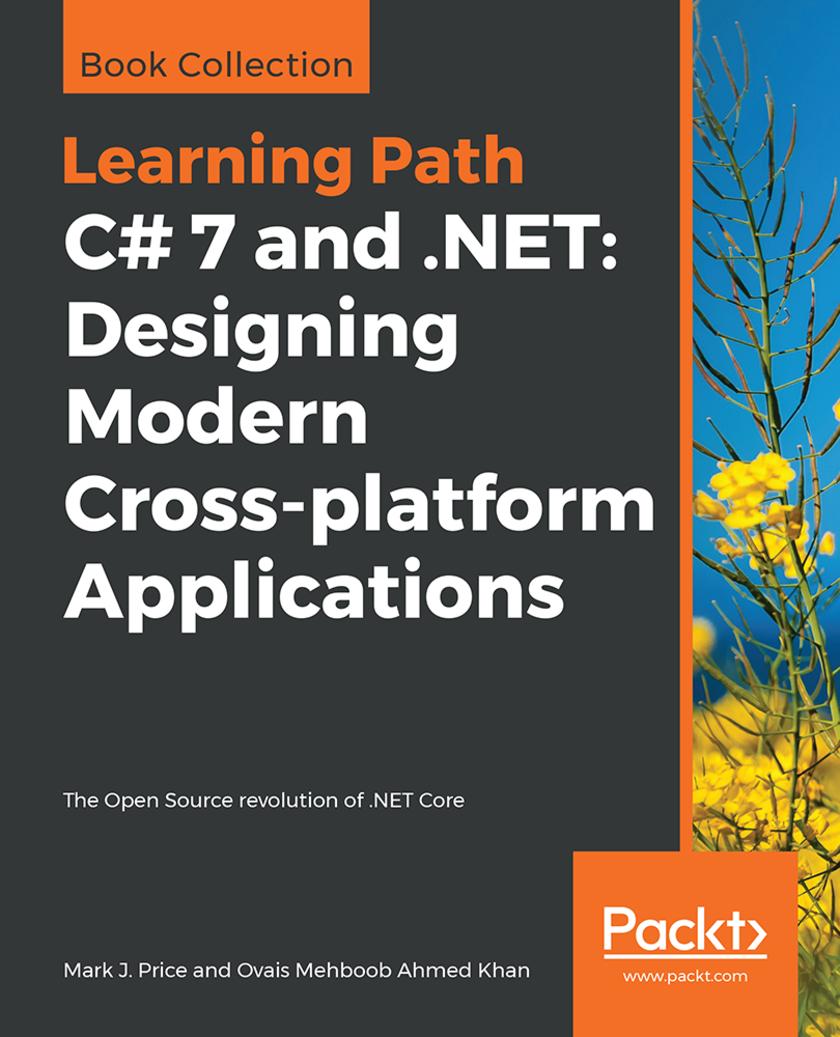
C# 7 and .NET: Designing Modern Cross-platform Applications
¥90.46
Explore C# and the .NET Core framework to create applications and optimize them with ASP.NET Core 2 Key Features *Get to grips with multi-threaded, concurrent, and asynchronous programming in C# and .NET Core *Develop modern, cross-platform applications with .NET Core 2.0 and C# 7.0 *Create efficient web applications with ASP.NET Core 2. Book Description C# is a widely used programming language, thanks to its easy learning curve, versatility, and support for modern paradigms. The language is used to create desktop apps, background services, web apps, and mobile apps. .NET Core is open source and compatible with Mac OS and Linux. There is no limit to what you can achieve with C# and .NET Core. This Learning Path begins with the basics of C# and object-oriented programming (OOP) and explores features of C#, such as tuples, pattern matching, and out variables. You will understand.NET Standard 2.0 class libraries and ASP.NET Core 2.0, and create professional websites, services, and applications. You will become familiar with mobile app development using Xamarin.Forms and learn to develop high-performing applications by writing optimized code with various profiling techniques. By the end of C# 7 and .NET: Designing Modern Cross-platform Applications, you will have all the knowledge required to build modern, cross-platform apps using C# and .NET. This Learning Path includes content from the following Packt products: *C# 7.1 and .NET Core 2.0 - Modern Cross-Platform Development - Third Edition by Mark J. Price *C# 7 and .NET Core 2.0 High Performance by Ovais Mehboob Ahmed Khan What you will learn *Explore ASP.NET Core to create professional web applications *Master OOP with C# to increase code reusability and efficiency *Protect your data using encryption and hashing *Measure application performance using BenchmarkDotNet *Use design techniques to increase your application’s performance *Learn memory management techniques in .NET Core *Understand tools and techniques to monitor application performance Who this book is for This Learning Path is designed for developers who want to gain a solid foundation in C# and .NET Core, and want to build cross-platform applications. To gain maximum benefit from this Learning Path, you must have basic knowledge of C#.
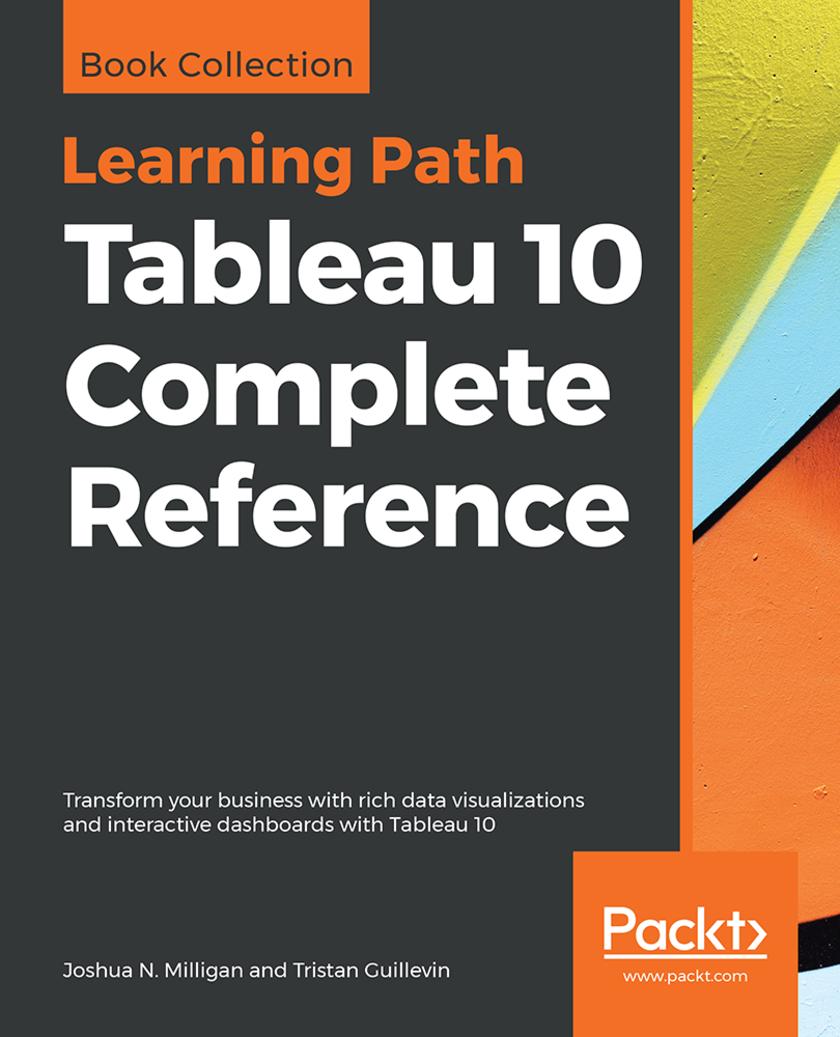
Tableau 10 Complete Reference
¥90.46
Explore and understand data with the powerful data visualization techniques of Tableau, and then communicate insights in powerful ways Key Features *Apply best practices in data visualization and chart types exploration *Explore the latest version of Tableau Desktop with hands-on examples *Understand the fundamentals of Tableau storytelling Book Description Graphical presentation of data enables us to easily understand complex data sets. Tableau 10 Complete Reference provides easy-to-follow recipes with several use cases and real-world business scenarios to get you up and running with Tableau 10. This Learning Path begins with the history of data visualization and its importance in today's businesses. You'll also be introduced to Tableau - how to connect, clean, and analyze data in this visual analytics software. Then, you'll learn how to apply what you've learned by creating some simple calculations in Tableau and using Table Calculations to help drive greater analysis from your data. Next, you'll explore different advanced chart types in Tableau. These chart types require you to have some understanding of the Tableau interface and understand basic calculations. You’ll study in detail all dashboard techniques and best practices. A number of recipes specifically for geospatial visualization, analytics, and data preparation are also covered. Last but not least, you'll learn about the power of storytelling through the creation of interactive dashboards in Tableau. Through this Learning Path, you will gain confidence and competence to analyze and communicate data and insights more efficiently and effectively by creating compelling interactive charts, dashboards, and stories in Tableau. This Learning Path includes content from the following Packt products: *Learning Tableau 10 - Second Edition by N. Milligan *Getting Started with Tableau 2018.x by Tristan Guillevin What you will learn *Build effective visualizations, dashboards, and story points *Build basic to more advanced charts with step-by-step recipes *Become familiar row-level, aggregate, and table calculations *Dig deep into data with clustering and distribution models *Prepare and transform data for analysis *Leverage Tableau’s mapping capabilities to visualize data *Use data storytelling techniques to aid decision making strategy Who this book is for Tableau 10 Complete Reference is designed for anyone who wants to understand their data better and represent it in an effective manner. It is also used for BI professionals and data analysts who want to do better at their jobs.
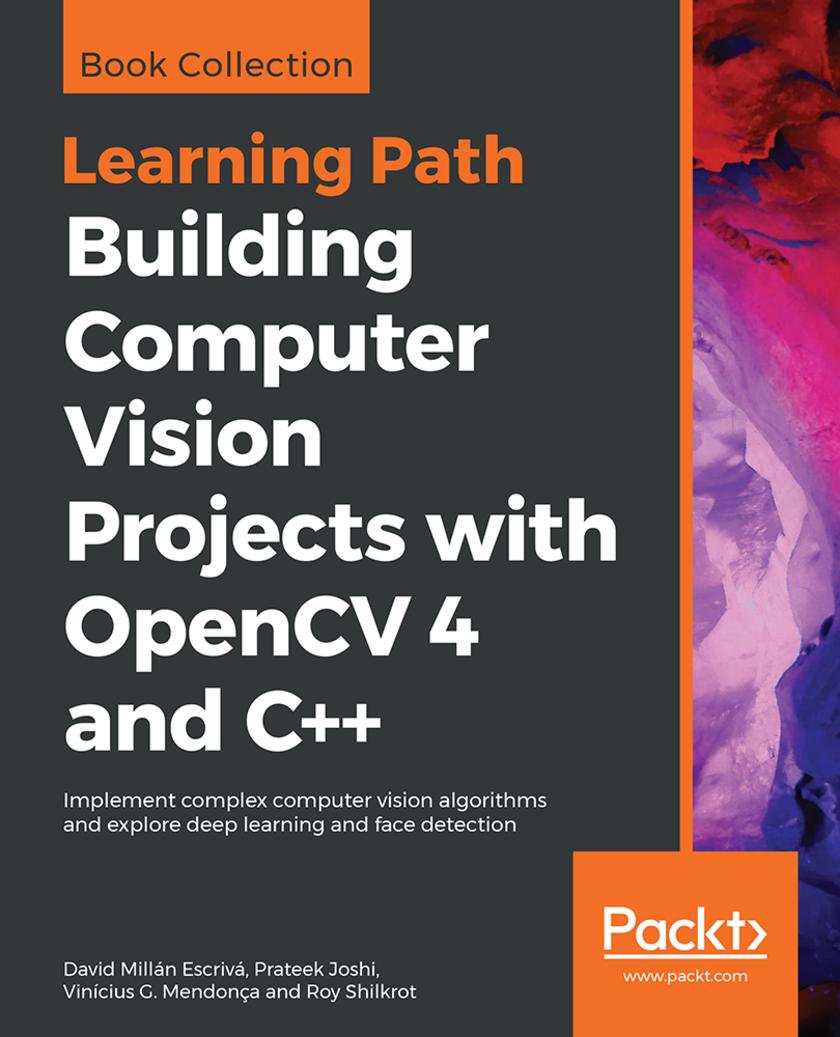
Building Computer Vision Projects with OpenCV 4 and C++
¥90.46
Delve into practical computer vision and image processing projects and get up to speed with advanced object detection techniques and machine learning algorithms Key Features * Discover best practices for engineering and maintaining OpenCV projects * Explore important deep learning tools for image classification * Understand basic image matrix formats and filters Book Description OpenCV is one of the best open source libraries available and can help you focus on constructing complete projects on image processing, motion detection, and image segmentation. This Learning Path is your guide to understanding OpenCV concepts and algorithms through real-world examples and activities. Through various projects, you'll also discover how to use complex computer vision and machine learning algorithms and face detection to extract the maximum amount of information from images and videos. In later chapters, you'll learn to enhance your videos and images with optical flow analysis and background subtraction. Sections in the Learning Path will help you get to grips with text segmentation and recognition, in addition to guiding you through the basics of the new and improved deep learning modules. By the end of this Learning Path, you will have mastered commonly used computer vision techniques to build OpenCV projects from scratch. This Learning Path includes content from the following Packt books: * Mastering OpenCV 4 - Third Edition by Roy Shilkrot and David Millán Escrivá * Learn OpenCV 4 By Building Projects - Second Edition by David Millán Escrivá, Vinícius G. Mendon?a, and Prateek Joshi What you will learn * Stay up-to-date with algorithmic design approaches for complex computer vision tasks * Work with OpenCV's most up-to-date API through various projects * Understand 3D scene reconstruction and Structure from Motion (SfM) * Study camera calibration and overlay augmented reality (AR) using the ArUco module * Create CMake scripts to compile your C++ application * Explore segmentation and feature extraction techniques * Remove backgrounds from static scenes to identify moving objects for surveillance * Work with new OpenCV functions to detect and recognize text with Tesseract Who this book is for If you are a software developer with a basic understanding of computer vision and image processing and want to develop interesting computer vision applications with OpenCV, this Learning Path is for you. Prior knowledge of C++ and familiarity with mathematical concepts will help you better understand the concepts in this Learning Path.
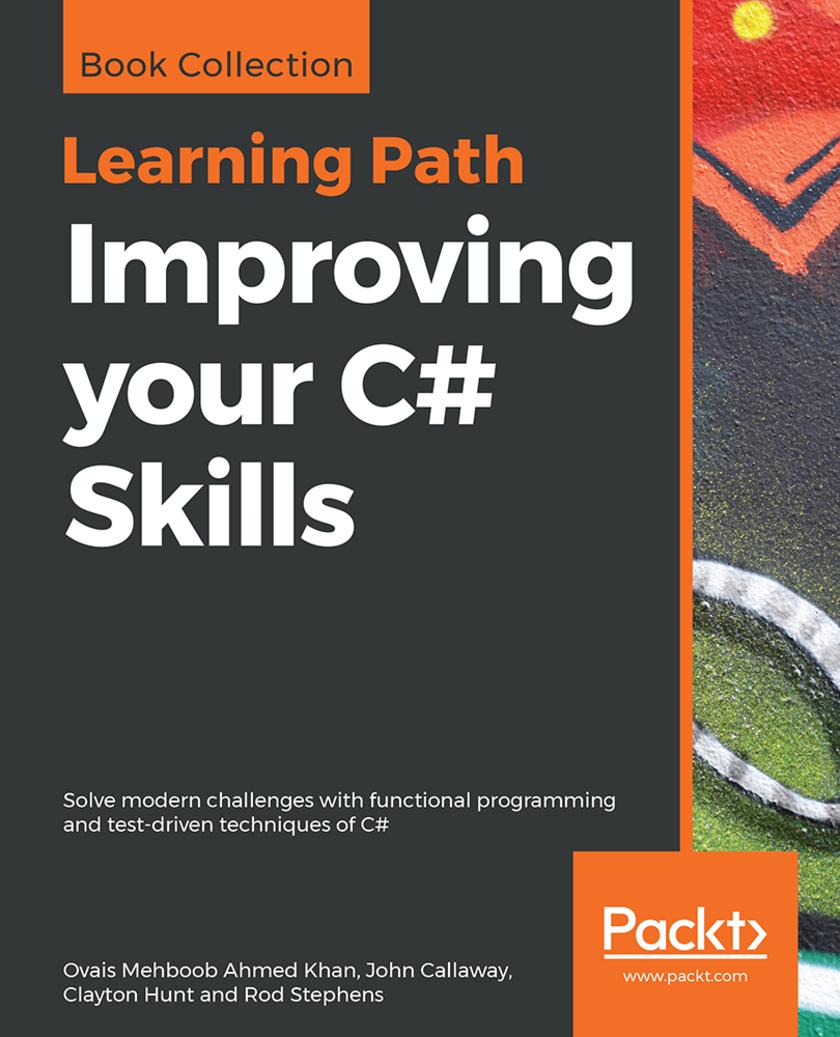
Improving your C# Skills
¥90.46
Conquer complex and interesting programming challenges by building robust and concurrent applications with caches, cryptography, and parallel programming. Key Features * Understand how to use .NET frameworks like the Task Parallel Library (TPL)and CryptoAPI * Develop a containerized application based on microservices architecture * Gain insights into memory management techniques in .NET Core Book Description This Learning Path shows you how to create high performing applications and solve programming challenges using a wide range of C# features. You’ll begin by learning how to identify the bottlenecks in writing programs, highlight common performance pitfalls, and apply strategies to detect and resolve these issues early. You'll also study the importance of micro-services architecture for building fast applications and implementing resiliency and security in .NET Core. Then, you'll study the importance of defining and testing boundaries, abstracting away third-party code, and working with different types of test double, such as spies, mocks, and fakes. In addition to describing programming trade-offs, this Learning Path will also help you build a useful toolkit of techniques, including value caching, statistical analysis, and geometric algorithms. This Learning Path includes content from the following Packt products: * C# 7 and .NET Core 2.0 High Performance by Ovais Mehboob Ahmed Khan * Practical Test-Driven Development using C# 7 by John Callaway, Clayton Hunt * The Modern C# Challenge by Rod Stephens What you will learn * Measure application performance using BenchmarkDotNet * Leverage the Task Parallel Library (TPL) and Parallel Language Integrated Query (PLINQ)library to perform asynchronous operations * Modify a legacy application to make it testable * Use LINQ and PLINQ to search directories for files matching patterns * Find areas of polygons using geometric operations * Randomize arrays and lists with extension methods * Use cryptographic techniques to encrypt and decrypt strings and files Who this book is for If you want to improve the speed of your code and optimize the performance of your applications, or are simply looking for a practical resource on test driven development, this is the ideal Learning Path for you. Some familiarity with C# and .NET will be beneficial.




 购物车
购物车 个人中心
个人中心



